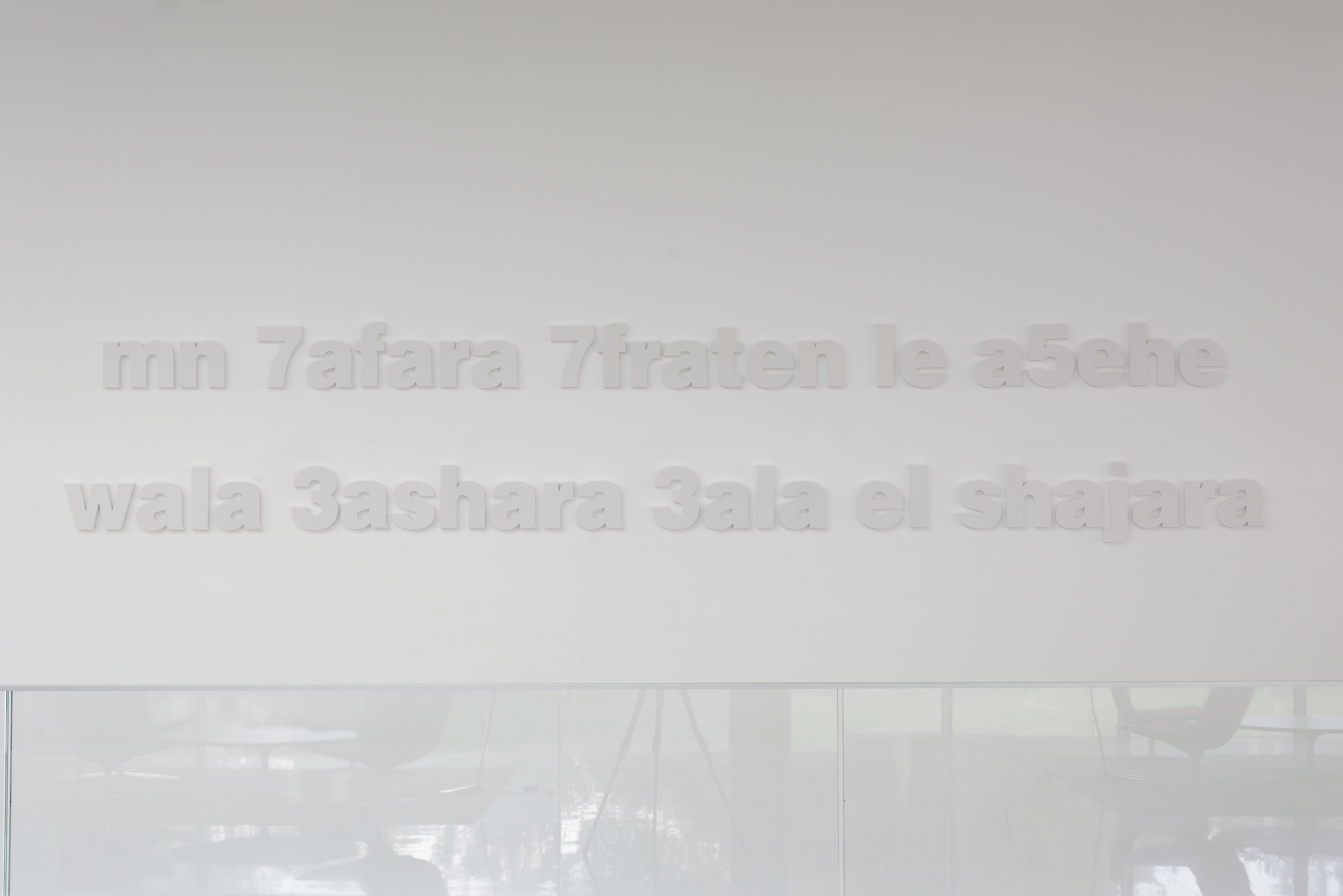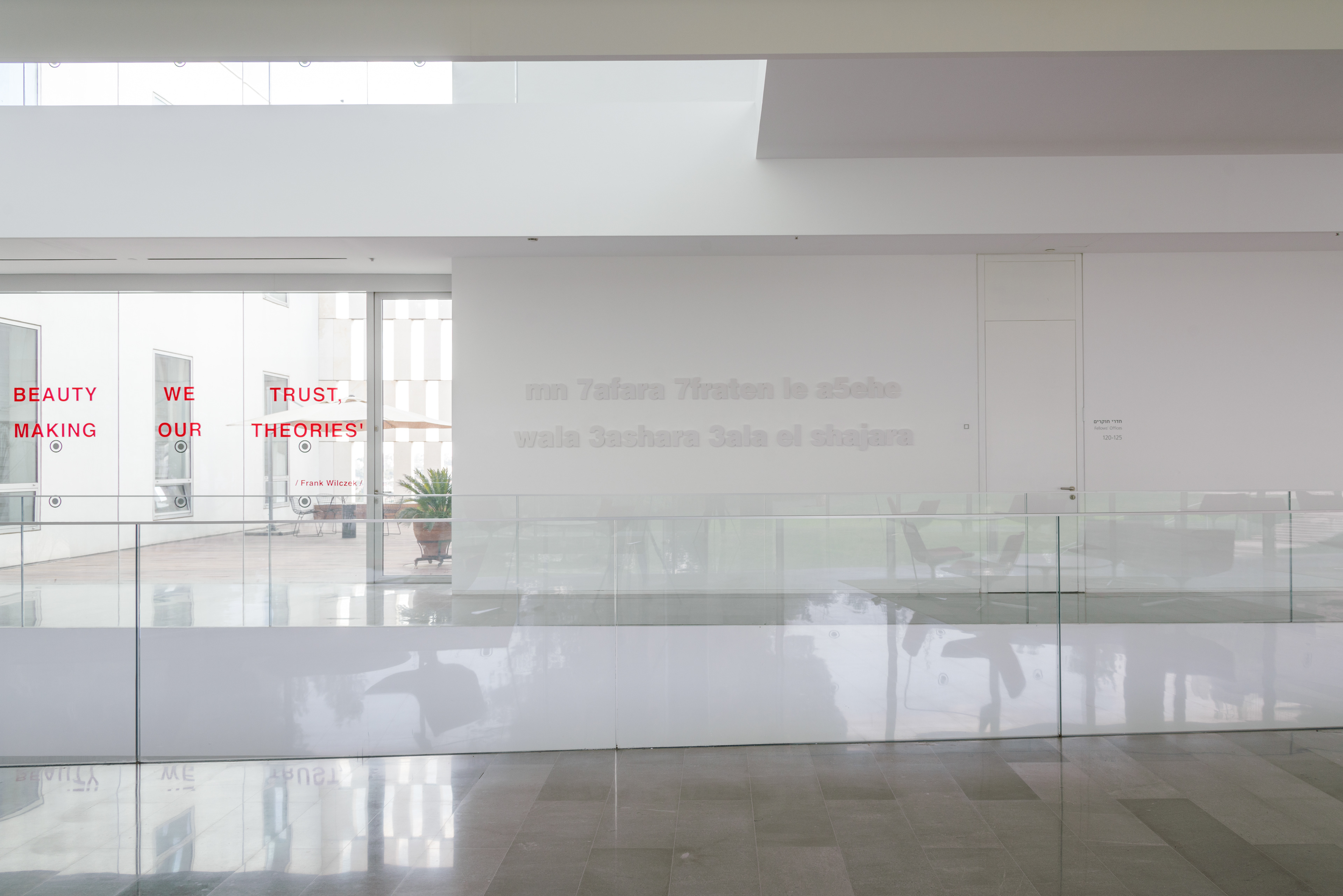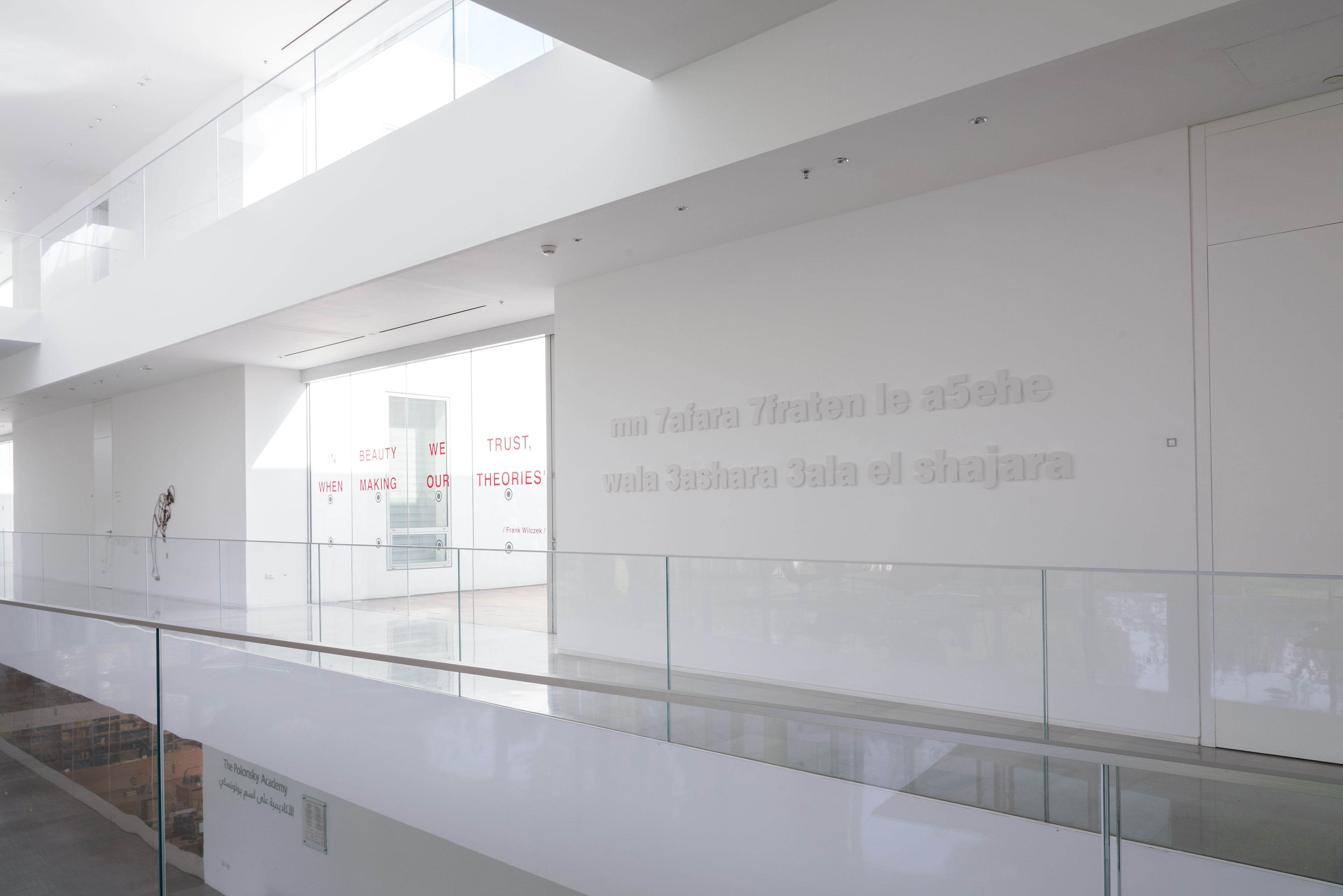Untitled Wall val 1 and val 2
PVC cutout
In everyday Arab culture, a person who uses proverbs is considered worldly-wise. Hamody
Gannam’s word art consists of taking apart and reassembling of two popular Arabic proverbs:
“He who digs a hole for his brother is bound to fall in it”; and “a bird in the hand is better than ten
in a tree.” From these, Gannam creates a new proverb: “he who digs a hole for his friend and
not ten in a tree.” Gannam’s method of reconstructing the saying draws its inspiration from the
slang that was created in the wake of a skit on Jordanian television in the 1990s in which a
passerby was asked to complete sayings, and would mix up each one. The skit was very
popular among the youth of those days who were being exposed to the broader world through
the mediums of television and technology and sought to rebel against the tradition represented
by the proverbs.
In parallel, a new writing was being created at the time as a result of the use of the new
cellphone technology. Because the Arabic alphabet did not appear on the keys, the Latin
alphabet was used for writing in Arabic. This new writing was even more established in the
online chat mIRC (Internet Relay Chat). In the transliteration that developed some of the Arabic
letters were replaced by numbers (for example, 3 for ع and 7 for ح). Use of this script is still
widespread on the internet. In his work, Gannam pastes the proverb he created using this
transliteration in white letters on a white wall, so that they are, as if, absorbed into it. The work,
which expresses the disappearance of the Arabic language and culture from the public space, is
installed in the neighborhood of Talbiyeh, where all that is left of the once thriving Arabic culture
is merely decorative, and in the Van Leer Institute which represents a scientific-academic
approach that is far from traditional knowledge. This, in the midst of globalization, which seeks
to create a fictitious uniform human being, and coming after the recent passing of the Nationality
law in the Knesset that violates the status of the Arabic language, places a painful mirror in front
of the ongoing cultural erasure that is fracturing the identity of young Arabs in Israel.
PVC cutout
In everyday Arab culture, a person who uses proverbs is considered worldly-wise. Hamody
Gannam’s word art consists of taking apart and reassembling of two popular Arabic proverbs:
“He who digs a hole for his brother is bound to fall in it”; and “a bird in the hand is better than ten
in a tree.” From these, Gannam creates a new proverb: “he who digs a hole for his friend and
not ten in a tree.” Gannam’s method of reconstructing the saying draws its inspiration from the
slang that was created in the wake of a skit on Jordanian television in the 1990s in which a
passerby was asked to complete sayings, and would mix up each one. The skit was very
popular among the youth of those days who were being exposed to the broader world through
the mediums of television and technology and sought to rebel against the tradition represented
by the proverbs.
In parallel, a new writing was being created at the time as a result of the use of the new
cellphone technology. Because the Arabic alphabet did not appear on the keys, the Latin
alphabet was used for writing in Arabic. This new writing was even more established in the
online chat mIRC (Internet Relay Chat). In the transliteration that developed some of the Arabic
letters were replaced by numbers (for example, 3 for ع and 7 for ح). Use of this script is still
widespread on the internet. In his work, Gannam pastes the proverb he created using this
transliteration in white letters on a white wall, so that they are, as if, absorbed into it. The work,
which expresses the disappearance of the Arabic language and culture from the public space, is
installed in the neighborhood of Talbiyeh, where all that is left of the once thriving Arabic culture
is merely decorative, and in the Van Leer Institute which represents a scientific-academic
approach that is far from traditional knowledge. This, in the midst of globalization, which seeks
to create a fictitious uniform human being, and coming after the recent passing of the Nationality
law in the Knesset that violates the status of the Arabic language, places a painful mirror in front
of the ongoing cultural erasure that is fracturing the identity of young Arabs in Israel.



Showed at van leer Jerusalem as part of the MANOFFIM JERUSALEM COTEMPRARY ART FESTIVAL 2018
Writer: Rinat Edelstein
Translation: Sharon Assaf
Curators: Rinat Edelstein and Lee He Shulov
Associate curator: Hadassa Cohen
Photo by: Kira Kletsky
Writer: Rinat Edelstein
Translation: Sharon Assaf
Curators: Rinat Edelstein and Lee He Shulov
Associate curator: Hadassa Cohen
Photo by: Kira Kletsky
Ramat Gan Museum 2022